In the waist bin of my life sit many waterproof garments; some suffixed with “Tex,” “No,” and “light.” A rough estimate counts two pieces that were, by all accounts, 100% waterproof: a vinyl Atlanta Falcons poncho my mom snagged at a discount store (we lived nowhere near Georgia) and a pair of still beloved insulated Xtratufs. Neither poncho nor boots are breathable.
This is to say that finding a happy medium between two seemingly disparate functions, like waterproof and breathable, is hard to execute. 3L membranes like Gore-Tex Pro have come close to mastering, for example, the breathable-waterproof conundrum. On full on storm days, I’m wearing a hard shell top and bottom.
As companies introduce new fabrics, the goal posts move—we want and expect more. A jacket category still in flux and even maybe semi-mythical, is active insulation. Active insulation promises breathable properties—in tech-speak, we call this moisture vapor transfer rate (MVTR) while allowing some air, not all, to pass through (a measure of cfm), all while providing some insulation. Many concepts are in play.
Practically speaking, there are many solutions backcountry skiers and riders use to solve the MVTR, cfm, and insulation trifecta. You can also call these technical parameters not feeling clammy and cold or too hot. Pit zips, pushing sleeves up on the arms, applying basic tenets of effective layering, and following the principle of starting cold at the trailhead are a few low-tech and proven solutions. If you have your active insulation system (meaning an effective and practical layering system dialed, then purchasing an “active insulation” piece is a costly solution for a problem you may not have.
Skinning is active; the metabolism cranks, sweat happens. Still we demand from the fabric-alchemists a product to wick and transport your backcountry glow. We’re just as quick to demand a jacket with insulative capabilities if it’s windy or we slow down during a transition. Active insulation pieces aren’t just a marketing concept. It’s a way for apparel designers to help us solve our sartorial fixation with using a single piece to solve those problems. In other words, a piece that helps thermoregulate the core as you stoke the metabolic stove while ascending or cool off.
Arc’teryx’s Proton Hybrid Hoody is a hopeful, even promising, dare we say Goldilox, active insulation. The jacket is a lot of things. But not everything.
The Basics
Price: $350.00
Sizing: Arc’teryx fitted
Weight M Medium: 358g confirmed
Purpose: Active Insulation for cold weather
Face Fabric 1: Panels of GORE-TEX INFINIUM™ at the yoke and hood
Face Fabric 2: Fortius Air 50 (more air permeable) around the core and arms with Coreloft™ Compact insulation in select zones.
Pockets: Two zippered external hand pockets
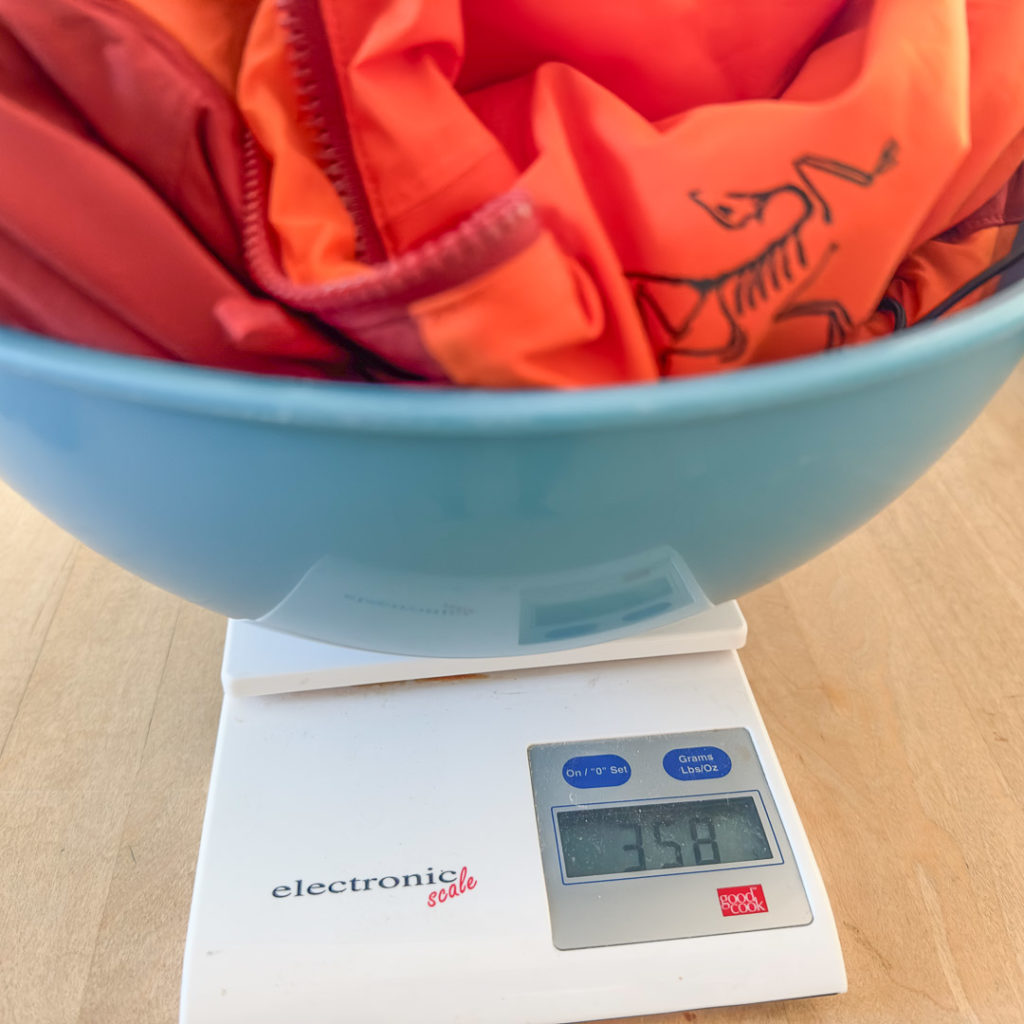
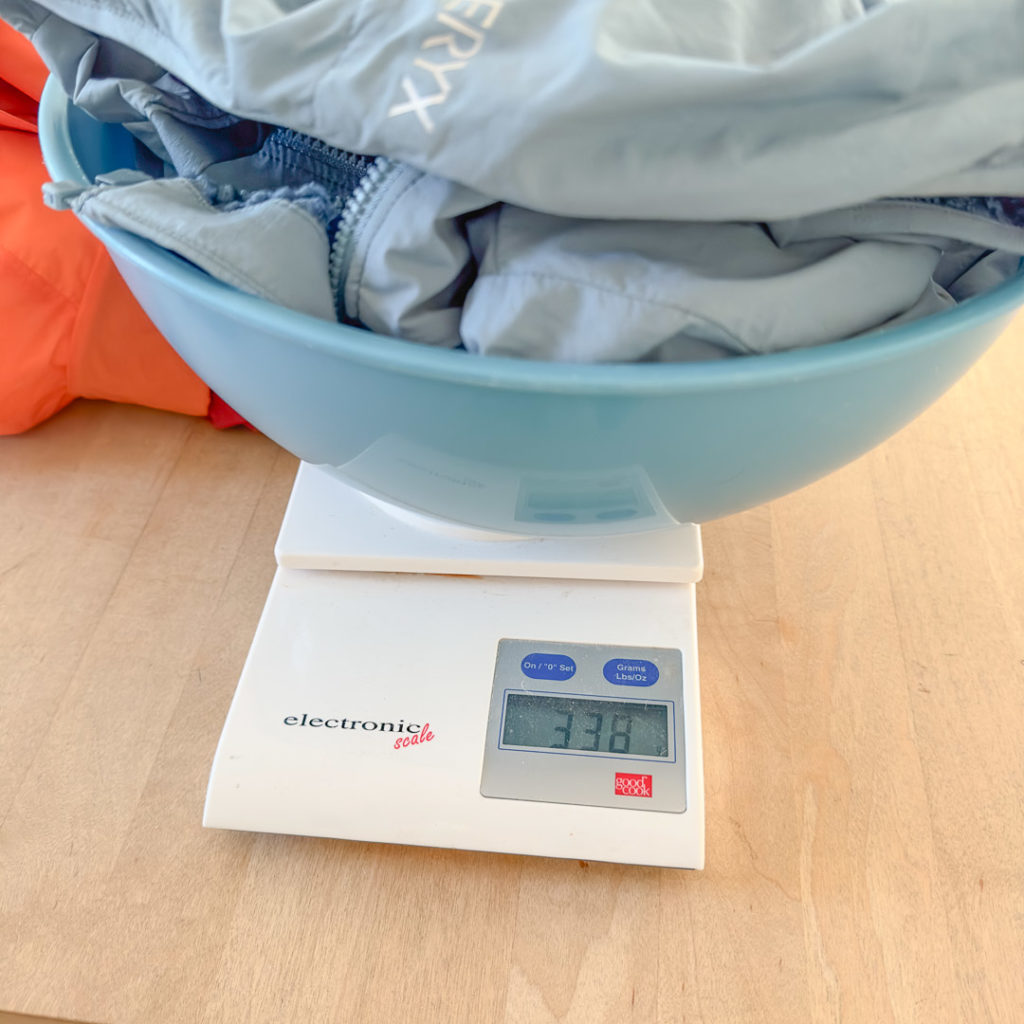
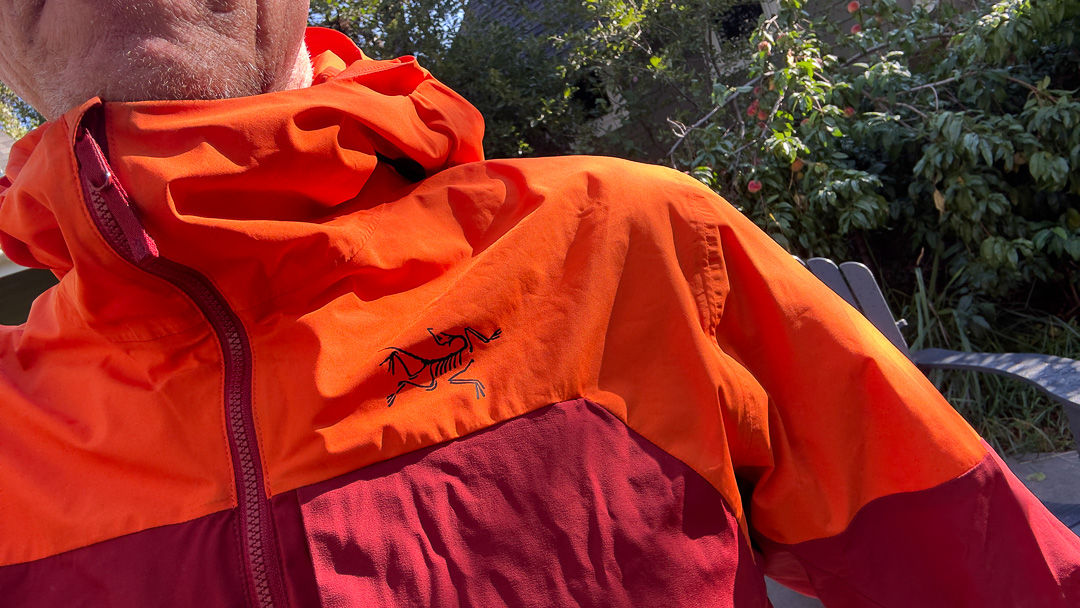
What is the Proton Hybrid?
It is yet another well designed, well made technical outerwear jacket in the vast Arc’teryx lineup. The jacket weighs 358g, a 20g bump if you are familiar with the venerable Proton Lightweight Hoody (formerly known as the Proton LT Hoody).
The Proton Hybrid features some DWR-treated GORE-TEX INFINIUM fabric. INFINIUM is not waterproof Gore-Tex; it is weather resistant to an extent. It beads moisture in a drizzle and helps you remain an approximation of dry in flurries. Only the yoke and hood use this fabric. (For those not accustomed to being harnessed like oxen, the jacket’s yoke runs from the front to back over the shoulders.) This Gore fabric is windproof, with a claimed 1.0 cfm (the lower the cfm, the less air permeable the fabric).
To summarize, in a big ole windy gale, your head and yoke are protected from the wind’s full force. But, there’s a lot of jacket left for the wind to penetrate. In the case of the Proton Hybrid and your thermoregulation, this shouldn’t be a deal breaker.
The rest of the jacket, meaning the front and back torso, arms and sides, use Fortius™ Air 50 face fabric. This fabric, with its space-age name, is a 50 denier strength nylon weave: call it durable, unheavy, and, in the case of this jacket, relatively breathable. The jacket is lined with a 20 D nylon fabric. For reference, my burliest Gore-Tex Pro hardshell has a 40 D face fabric. The Proton Hybrid’s face fabric feels softer and more supple despite its slightly heavier weave.
In specific zones (front torso/core and shoulders) the Proton Hybrid incorporates 40 g of Coreloft™ Compact 40 insulation. True to its name, this synthetic insulation is thin (read compact) without any noticeable bulk or loft. The women’s model has 60g of the same insulation. Of the long list of Arc’teryx synthetic insulated jackets aimed at technical pursuits, considering amount of insulation measured in g/m², the Proton Hybrid has the least amount of insulation. That’s a bonus. Our main complaint for active insulation is that pieces are often too warm — they insulate too effectively. The Proton Hybrid strikes a nice balance and wisely errs on the side of less insulation is better for most active pursuits.
The Proton Hybrid Hoody is like wearing a thin semi-air-permeable insulated vest. The jacket’s sleeves lack insulation and are not 100% windproof: they add ample protection but assist with proper thermoregulation by dumping heat in a breeze. If still you run too hot on the ascent, the full zip allows instant heat evacuation.
The jacket is suitable over a thin baselayer to keep me warm while skinning in colder winter and springtime temperatures. Add a breeze to the weather equation, and I’m dialed; airflow and vapor transfer are ideal. That changes slightly when I transition from skinning to skiing in a strong cold wind. In that case, for almost zero weight penalty in my pack, I can throw on my BD Distance Wind Shell to cut wind or add a puffy for some warmth. The Proton Hybrid is fitted and seats nicely under a puffy. I also have no issues with fit and mobility when layering a thin hoody and t-shit as an underlay. But as noted, the Proton Hybrid can supplant the hoody as it is more weather and windproof.
Zeroing in on the proper type of active insulation is tough and varies from person to person. If you run cold, high-tempo ascents in the Proton Hybrid Hoody might be the porridge Goldilox seeks; if you run hot, even in mid-winter, the jacket might be too warm for the active portions of your day. If that’s you, keep the base layer very thin, and maybe wear a ball cap with buff instead of a knit hat.
What I’m Used To and Trying to Dial in the Meaning of Hybrid
Here’s my typical garment run down for a day of touring to get an idea of what I usually use as active insulation. Mid-winter, I wear a thin synthetic long-sleeve or a t-shirt baselayer, depending on forecasted winds and temps.
Next, I usually layer a TNF Summit Series full-zip Futurelight hoody. Compared to the benchmark Patagonia R1, this fleece feels more air permeable and less insulative—an upside for me.
I then layer a Patagonia Air Nano vest over if it is ~25 degrees Fahrenheit or colder. I can unzip the vest to dump heat or remove it altogether.
I wear a hard shell over the Futurelight hoody if cold and kicking winds are on tap. (Hard shell: Either Patagonia’s Gore-Tex Pluma or an older iteration of Norrona’s Lyngen Gore-Tex Active Jacket.) If the temps are moderate, in the high 20s, and warming towards freezing, with low humidity, I bring a featherweight non-waterproof windbreaker. (I always carry some sort of puffy in the pack.)
The only piece a clothing designer would likely wrangle into the active insulation category is the Nano Air vest. The Nano Air vest has 40 cfm fabric and 60 g/m2 synthetic insulation. If you’ll consider the Proton Hybrid Hoody a vest for a moment (recall the insulated portions of the Proton Hybrid resemble a vest), the Arc’teryx jacket feels like a higher cfm (less windproof) and less warm package than the Nano Air. I prefer those qualities, and I expect, as backcountry skiers and splitboarders, you, too, prefer active insulation to skew more towards the active side of the see-saw than the insulation side.
I’m comparing the Nano Air here because nailing down the precise cfm stats for the Proton Hybrid Jacket is like teasing out clues for the Fenn Treasure. Here’s a short quote from a friend in the outdoor clothing world:
“Fabric FYI which is intuitive: two fabrics with the same cfm but different g/m2 for insulation, say the difference between 40g/m2 and 60g/m2, feel different— their effective cfm as a material package—the combo of face fabric and insulation— create a slightly different barrier for air to pass through.”
Incorporating the Proton Hybrid into the Mix
On days when I wear the Proton Hybrid Hoody starting at the trailhead, I leave the Nano Air vest at home. The Futurelight fleece hoody remains in the pack providing some warmth insurance for the less active parts of my day or the descents. Again, I always carry a puffy. On days with noticeable precip, I leave the Proton Hybrid Jacket at home and go the route of a baselayer under hoody all under a hardshell (with pit zips usually open) at the trailhead.
I suppose you may be asking, where does the Proton Hybrid Hoody fit in my jacket quiver?
Know thyself and know the weather. With the Proton Hybrid, you’ll have some layering latitude. For me, that sometimes means foregoing the hoody and vest combo. While yo-yoing laps in cold weather, I can usually wear the Proton Hoody all day, and add or shed a puffy accordingly.
I also have a nordic skiing habit. While more under control than in years past, the habit is a way to maintain fitness and exercise Riley, the uber-fit, ever-stoked, no-mission-goes-too-deep ski-pooch. Anyhow, on very cold days, I’ve used the Proton Hybrid over a thin baselayer to good effect while nordic skiing, which can be a very high-output endeavor. All I’m saying is to experiment with this jacket and see how far you can push the “hybrid” naming device.
For the hellbent on-piste uphiller, the Proton Hybrid Hoody could simplify the jacket choices, as it can be a single do-it-all jacket for the pre-work vert.
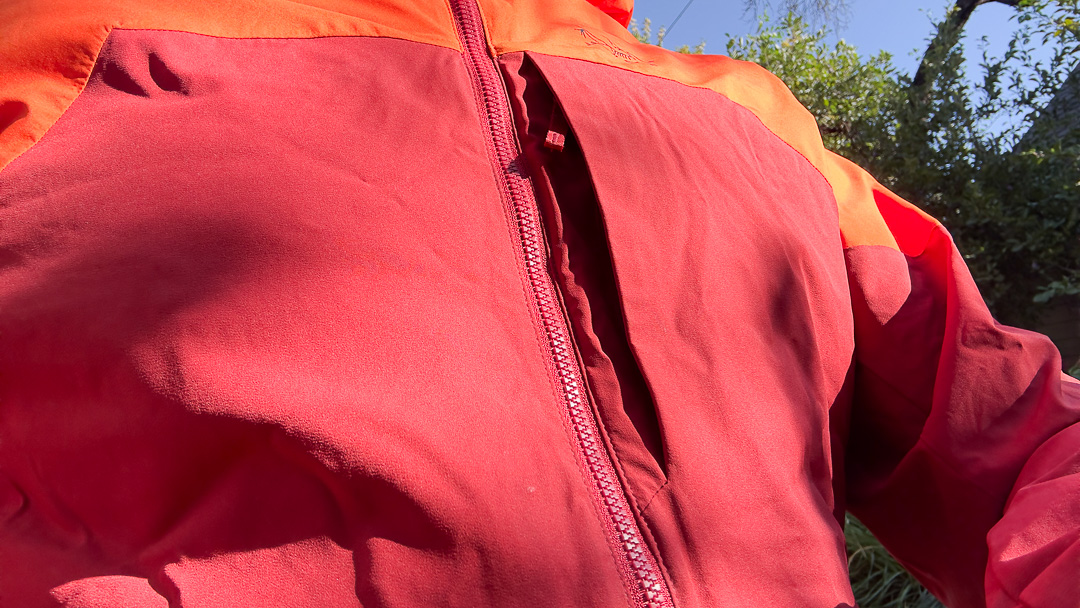
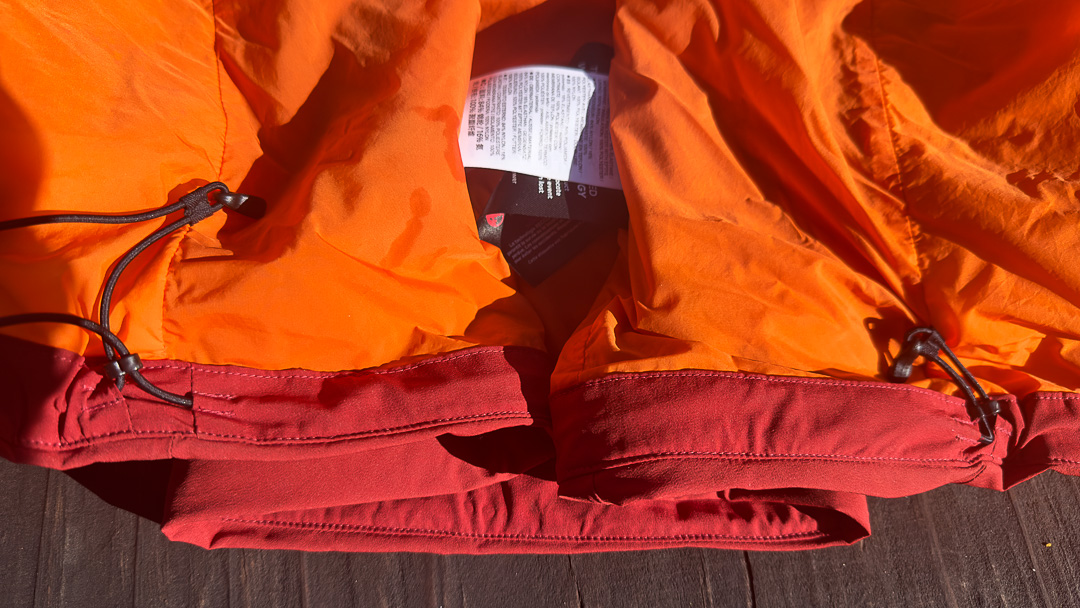
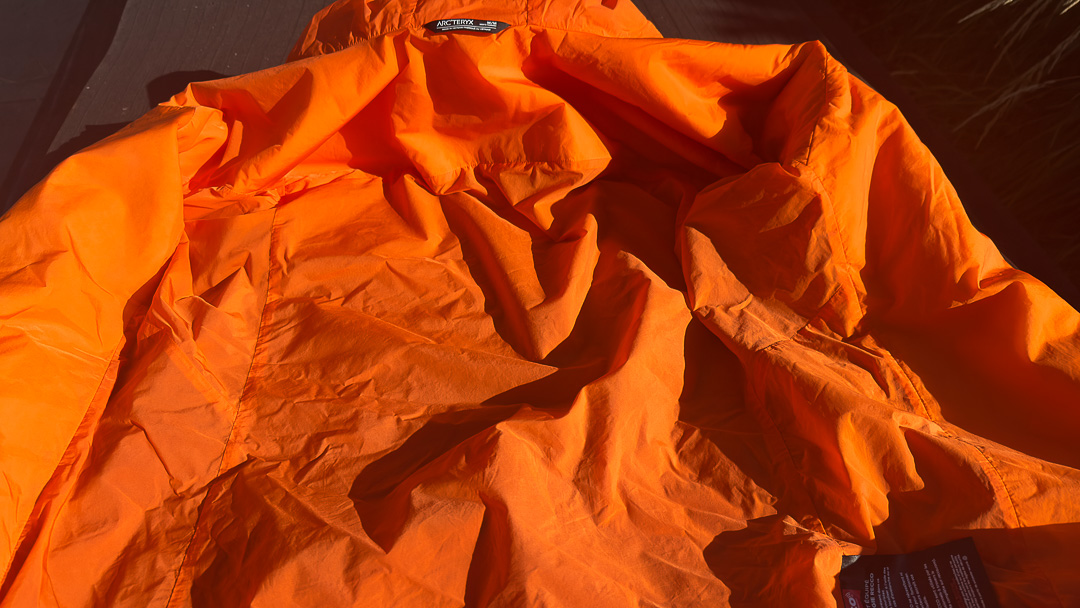
The Proton Hybrid Essentials
A well-sized zippered chest pocket is suitable for a phone and bar. The two zippered hand pockets are not fleece lined (fine by us) and are accessible while wearing a thin waist belt. As a jacket that leans more towards minimalist, appropriately, there are no interior pockets. If you enjoy stuffing skins into interior pockets, find another skin storage strategy. You could simply do as many do, unzip the main front zip, and stuff skins near your torso—that’s a low-tech and effective storage solution in dry snow conditions.
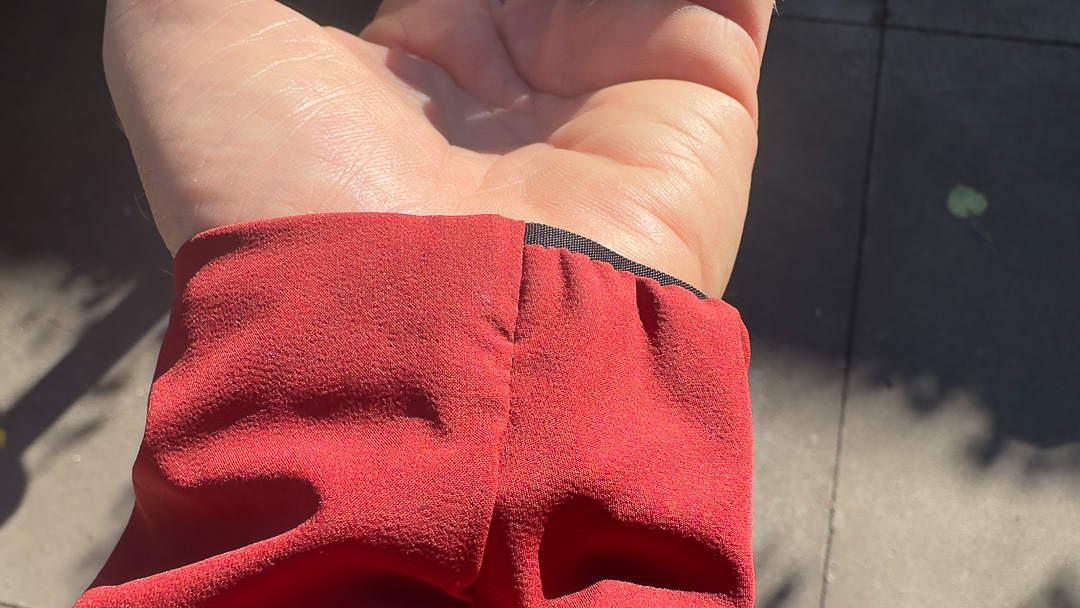
Cuffs are elasticized. Removing the sleeves without removing a glove or mitten first is tough. Dobale, though, only while wearing a thin liner glove. The hemline is snugged by tightening an elastic cord on the left or right side of the zipper. The rear hem is dropped slightly.
The fitted hood seats nicely under a helmet or over a ski hat. An elastic cord cinches the hood in place; a single hand can tighten, while it takes me two hands to loosen.
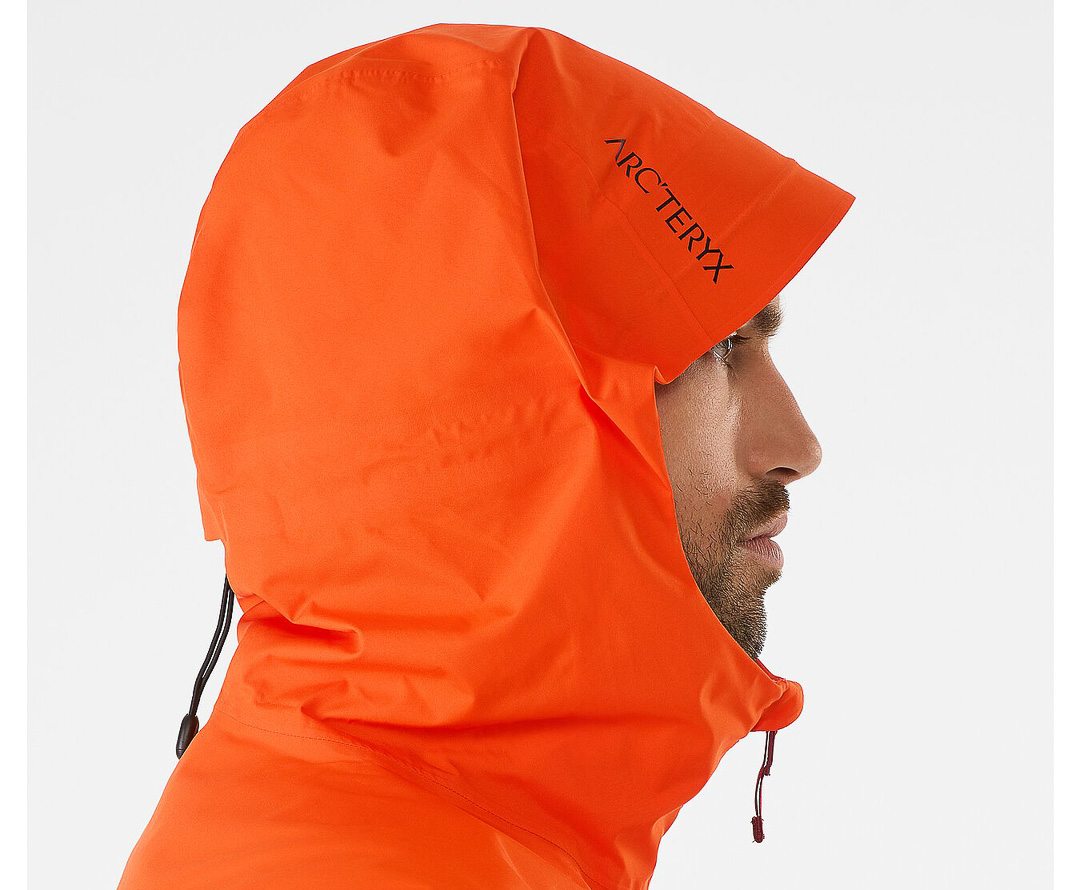
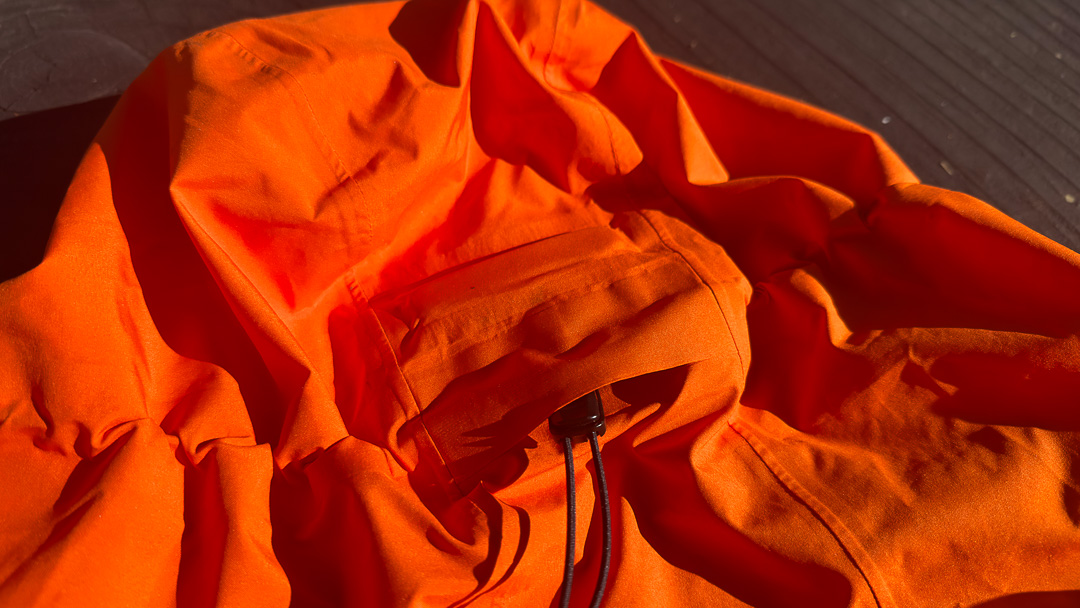
Sizing
Arc’teryx’s fit guide is snazzy—imagine rotating human figures in what appears to be a person clothed in “fitted,” “regular,” “relaxed,” and “oversized” garments. The Proton Hybrid Hoody is fitted. For those familiar with the deadbird’s sizing paradigm, I’d consider the Proton Hybrid Hoody’s fitted designation on point. Layering a long-sleeve base layer (make it thin) and a thin fleece hoody under the jacket is possible, and you should maintain proper unrestricted articulation. I’m 5’10” and ~160lbs (pre-ACL surgery), and the medium fits nicely. The models Arc’teryx features online wearing the Proton Hybrid Hoody are a claimed 6’2″, all wearing medium. That’s 4″ taller than me, and those cats wear the jacket well. I don’t prefer super baggy outerwear; the medium is spot on for my taste. If I were 6’2″, who knows.
The Proton Lightweight Hoody I wear is the new version, which has a slightly different fit than past iterations (or so I read). That jacket is also a medium and is lined with lightweight insulation. By design, with this piece, I don’t wear a light fleece hoody under it. In fact, in the medium, with the same TNF hoody layered under the Proton Lightweight Hoody, I compromise my articulation. Call it too tight. It does, however, fit great over a thin baselayer. Here’s the point: the Proton Lightweight Hoody is also fitted. My experience is the Proton Lightweight Hoody runs a bit smaller throughout compared to the Proton Hybrid Hoody. (Keeping all those Protons and Hoodies straight?) I bring this up if you own—or are familiar with—the Proton Lightweight Hoody and are looking into the Proton Hybrid. In my experience, the fits are slightly different.
To Close this Out
As the saying goes, underpromise and over-deliver. As an active insulation piece, the Proton Hybrid Hoody nails the permeability-insulative duality. I call that over-delivering as I prefer greater permeability and less insulation in an active insulation piece. That’s why, for example, I use a Nano Air vest and not a Nano Air jacket/hoody; they are too warm for me in most active situations. If you are pretty comfortable in the Nano series or a similar piece, stick with it.
For me, I’m uncertain if this piece should replace any specific jacket in the quiver. It is its own thing which is a refined and well-executed take on what active insulation can be. (That noted, I purchased the Proton Lightweight Hoody this summer and I’m curious to see which jacket I reach for more often as the season evolves.)
As mentioned, Arc’teryx is not marketing this as a wet weather solution, that is not a downside. Know what you are purchasing. This is not meant to replace a hardshell or a puffy.
Don’t expect to wear the Proton Hybrid and have the active, inactive, start, stop, and cold-not-cold layering systems perfectly dialed. But it’s close. With the Proton Hybrid Hoody, you’ll have a jacket with a relatively large range of “comfortable,” considering air temps. My guess is this jacket will come into play more often as an elegant solution to minimize layers on the colder missions and help you move more efficiently in the mountains. Once you find what works for you with this active insulation piece, you’ll spend more time ascending and descending and less time fiddling with layers.
Look for a more in-depth comparison between the Arc’teryx Proton Hybrid Hoody and the Proton Lightweight Hoody in the next few months.

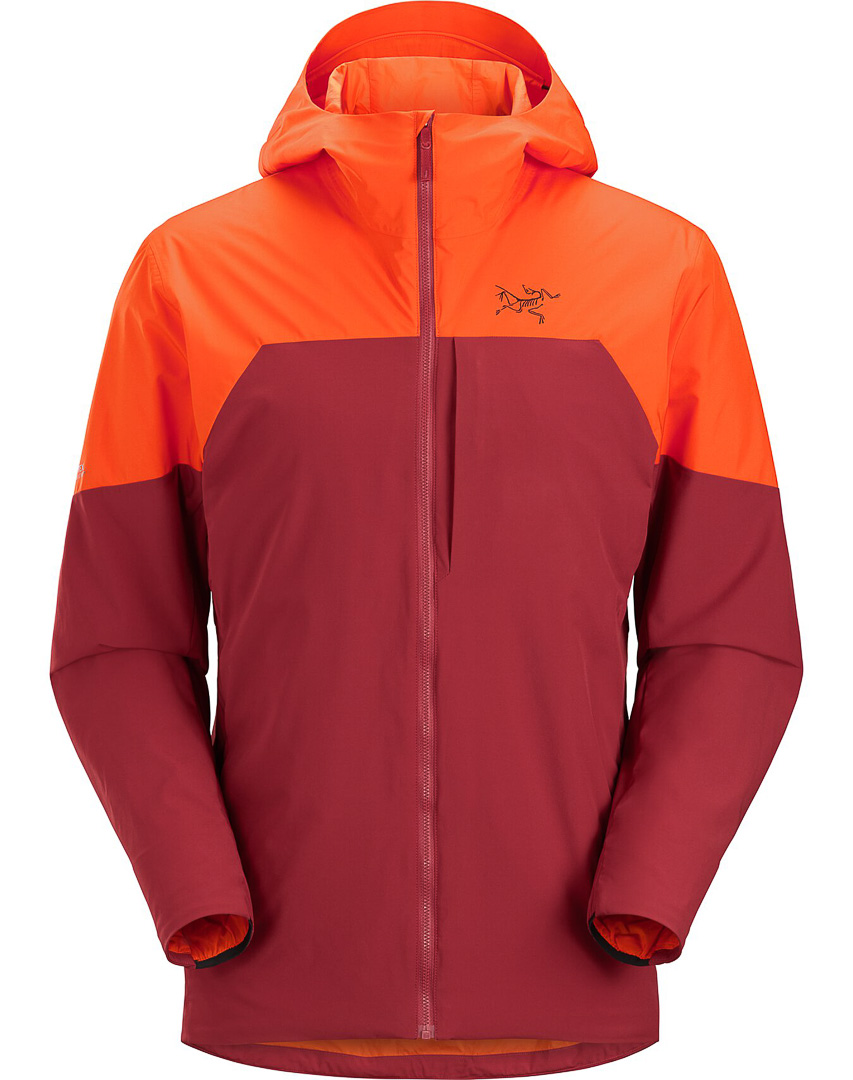




Leave a Reply
You must be logged in to post a comment.